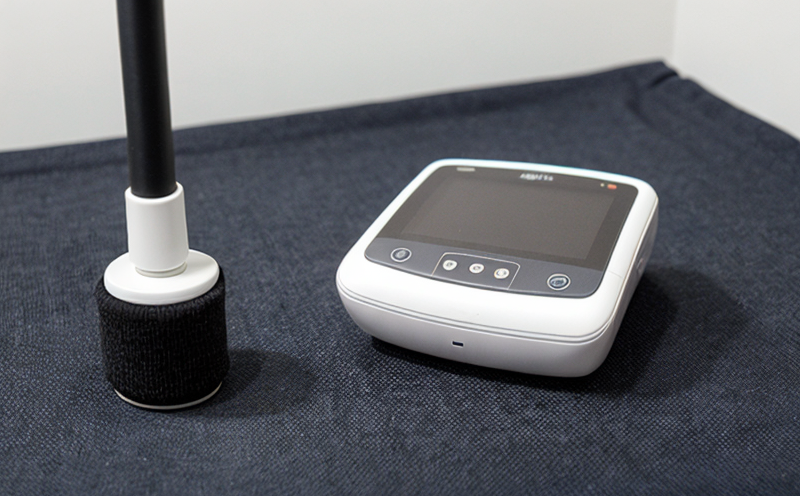IEC 62368 Safety of wearable smart devices integrated in fabrics
The IEC standard 62368-1:2019 is a crucial document that outlines the safety requirements for electronic products, including wearable smart textiles. This comprehensive guide ensures that wearables integrated into textile fabrics are safe for use and do not pose any hazards to users.
Smart textiles have become increasingly popular in various sectors such as healthcare, fitness monitoring, and fashion. The integration of electronic components within fabric structures requires stringent safety measures to prevent potential risks. IEC 62368-1:2019 provides the necessary framework for manufacturers to ensure that their products comply with international safety standards.
The standard covers a wide range of parameters including electrical insulation, voltage limits, power dissipation, and protection against electric shock. It also addresses mechanical stresses, temperature effects, and the potential hazards associated with electromagnetic interference (EMI) and radio frequency interference (RFI).
For quality managers and compliance officers responsible for overseeing wearable smart textile products, understanding IEC 62368-1:2019 is essential. This standard ensures that all components used in these devices are safe to handle during manufacturing processes as well as when worn by end-users.
R&D engineers involved in developing new innovative wearables must adhere strictly to this guideline to avoid non-compliance issues which could delay product launches or lead to costly recalls after market release. Procurement teams too need to ensure that suppliers meet these stringent requirements before integrating any electronic components into fabric substrates.
Compliance with IEC 62368-1:2019 helps protect both the manufacturer and end-user by reducing liability risks associated with product failures or accidents caused due to non-compliant materials. By adhering to this standard, companies can demonstrate their commitment to safety while also meeting regulatory requirements.
Implementing IEC 62368-1:2019 ensures that wearable smart textiles are not only functional but also safe for everyday use. This includes protecting against electrical shocks from faulty circuits or batteries, ensuring proper grounding of metal parts within the fabric structure, and preventing overheating caused by excessive current flow.
Given the rapid advancement in technology and increasing demand for smart wearables integrated into fabrics, it is imperative that manufacturers stay abreast of evolving standards like IEC 62368-1:2019 to ensure their products remain competitive while maintaining high levels of safety.
Eurolab Advantages
At Eurolab, we pride ourselves on delivering unparalleled expertise in textile testing across various standards and protocols. Our team consists of highly qualified professionals with extensive experience in the field who can provide guidance tailored specifically to your needs.
- Comprehensive Testing Capabilities: We offer a full spectrum of services covering everything from initial design reviews through final inspections before shipment.
- State-of-the-Art Facilities: Our laboratories are equipped with the latest testing equipment and software solutions ensuring accurate results every time.
- Experienced Staff: Our staff members possess a deep understanding of international standards including IEC 62368-1:2019 allowing them to offer expert advice throughout all stages of your project lifecycle.
- Fast Turnaround Times: Thanks to our efficient processes and streamlined workflows, we can deliver reliable reports quickly so you don't have to wait long for feedback on product performance.
- Cost-Effective Solutions: By offering competitive pricing structures combined with value-added services such as consultation sessions or training programs, Eurolab ensures that clients get excellent returns on investment without compromising quality.
Whether you're looking to ensure compliance with specific regulations or simply want to improve the safety features of your products, Eurolab is here to help. Contact us today for more information about our IEC 62368-1:2019 testing services and how they can benefit your organization.
Quality and Reliability Assurance
At Eurolab, we understand the importance of quality assurance in ensuring that wearable smart textiles meet all necessary safety requirements as per IEC 62368-1:2019. Our rigorous testing protocols are designed to identify potential hazards early on so corrective actions can be taken promptly.
Our team uses advanced instrumentation and techniques to evaluate various aspects of the textile, including electrical insulation properties, voltage levels, power dissipation rates, and protection against electric shock. For mechanical stress assessments, we employ specialized equipment capable of simulating real-world conditions such as stretching or folding motions that may occur during normal usage.
Temperature effects are also crucial in determining whether a device integrated into fabric can withstand extreme temperatures without compromising its integrity. We utilize environmental chambers that allow us to test samples under controlled temperature variations ranging from freezing cold to scorching hot environments.
In addition, we perform electromagnetic compatibility (EMC) testing to ensure that the electronic components do not interfere with other nearby devices or systems. This includes measuring emitted radio frequencies (RFI), conducted emissions, and susceptibility tests to verify compliance with relevant standards.
By incorporating these comprehensive quality assurance measures into our workflow, Eurolab guarantees that each product we test meets stringent safety criteria set forth by IEC 62368-1:2019. This not only enhances consumer confidence but also protects manufacturers from legal actions arising from non-compliance.
We maintain strict adherence to ISO/IEC accreditation requirements, ensuring that our results are credible and reliable. Our commitment to excellence ensures that you receive accurate and timely reports every time.
Frequently Asked Questions
Use Cases and Application Examples
The application of IEC 62368-1:2019 extends far beyond just ensuring safety; it also plays a vital role in enhancing the overall performance and reliability of smart textiles. Here are some practical examples:
- Medical Devices: Integration into patient monitoring garments ensures accurate readings without interference from neighboring medical equipment.
- Fitness Wearables: Smart fabrics embedded with sensors can provide real-time health data to users while remaining comfortable and durable.
- Smart Clothing for Industry: Protective clothing lined with electronic components offers enhanced protection against harsh working conditions while still allowing freedom of movement.
In summary, IEC 62368-1:2019 provides a robust foundation upon which manufacturers can build innovative products that are both safe and functional. By adhering to this standard, companies ensure they meet regulatory requirements while also staying ahead in the competitive market for smart textiles.





